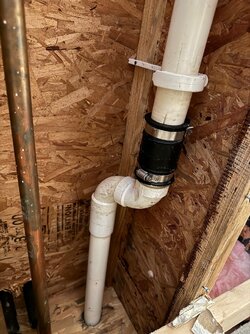This is the discharge pipe for my basement sump. It’s 1 1/2 PVC and the wall you see it going through is the external wall. I cannot figure out why they ran the sump pipe then glued 2 elbows together to RAISE the exit point from the house approx 3 inches above the line running back to the sump. There is a back-flow arrester above the sump pump so this 40ft run of 1 1/2 inch PVC stays full of water at all times. I’ll admit that I’m not a plumber and maybe there is a reason for this, but it seems it would be better if the exit point was below the run so the pipe could drain fully back to the riser each time the sump ran. Trying to keep the pipe from air-locking is the only reason I can think of that it was done like this. Any thoughts?


Last edited:



